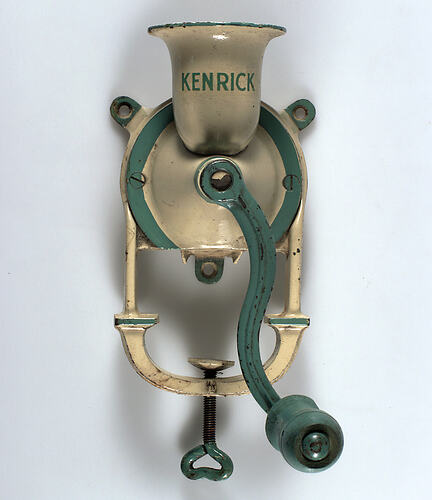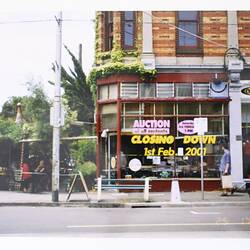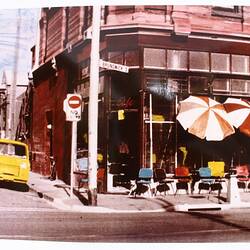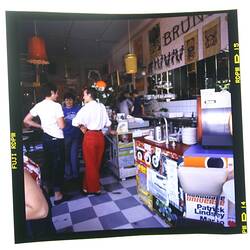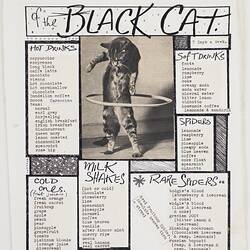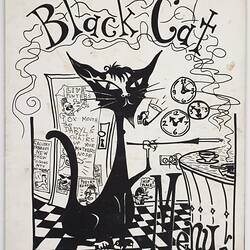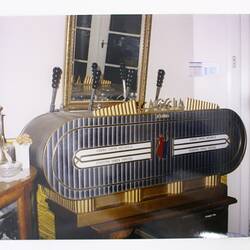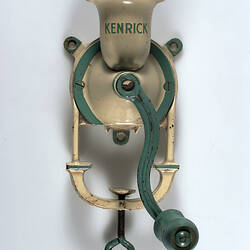Cafés have long been a significant aspect of the Melbourne food and restaurant scene. From the 1890s there were a number of popular cafes in Melbourne, such as Café Denat, Fasoli's Maison Dorée, Crystal Café, La Mascotte, Vienna Café and Café Anglais. Café Denat, which opened earlier in 1893, eventually became known as Florentino's after a number of changes in ownership. It is currently called Grossi Florentino and is still located in the same building on Bourke Street. It is still one of the most important and long running restaurants in Melbourne. Fasoli's opened in 1897, and was popular with Melbourne's bohemians and within the literary scene. Some of these cafés developed out of four penny and sixpenny restaurants begun in the 1850s, where the people of Melbourne could buy inexpensive meals at a set price. These were very popular, although the quality of the food was often poor. However, some of these restaurants became known for their superior food and became fine dining establishments, especially after they raised their prices.
Coffee is a major focus of Melbourne's café culture and has a long history in the city. It was originally brought to Australia in the First Fleet. Coffee houses or palaces sprung up here in the early 1830s as a product of the Temperance movement. The first was built in 1837 and were often much grander than other hotels and restaurants at the time. Coffee was seen as a better option than the demon drink, alcohol. James Munroe, an influential Melbourne business man and Temperance campaigner, built many of Melbourne's coffee palaces, including the Victoria and Federal Coffee Palaces in 1880 and 1888 respectively. However, the coffee palaces were never successful financially, and by the 1890s Depression, many of them closed or were forced to apply for liquor licenses in order to stay afloat.
Street coffee stalls could also be found in Melbourne from the 1850s to 1920s. Located on street corners, these small stalls provided cheap snacks throughout the day for Melbourne's workers. The coffee stalls gained their significance as a result of the population boom in Melbourne resulting from the Gold Rush of the 1850s. By the 1930s Melbourne had established its own version of continental European style coffee lounges. Approximately half of Melbourne's 450 registered cafes were tea and coffee lounges at this time (Brown-May, 2001, p.24). During the 1930s Melbourne finally enjoyed its first espressos. Luigi Bezera had invented the espresso coffee machine in 1901. These coffee machines were primarily found in restaurant kitchens and within small Italian owned grocery shops. They did not enter the mainstream until the late 1950s and 1960s.
The development of Melbourne's cosmopolitan café society has long been attributed to the influx of European migrants, particularly Italians, after World War Two. These post-war migrants went on to populate the inner city suburbs of Melbourne such as Carlton, Brunswick, Collingwood, Richmond, Fitzroy and North Melbourne. It is within these suburbs that the European based café culture in Melbourne began. A number of cafes within the CBD run by post-war immigrants were also established around this time. These included Pellegrini's in the city, Mario's in Brunswick, the Sidewalk Café, along with Mirka's Café and The Galleon in St Kilda. During the 1950s older style tea rooms and tea houses were replaced and converted into coffee lounges and the love of espresso coffee spread throughout the city. However, by the late 1950s and early 1960s the espresso bars had gained the reputation of 'hot beds of vice', at least among conservative citizens, and this reputation was soon exaggerated within the media.
Despite this, during the 1970s coffee related café culture gained prominence in Melbourne and by the 1990s it was thoroughly entrenched. During the 1980s a more youth focused café culture developed within the inner city suburbs with cafes such as the Black Cat Café, Mario's and Rhumbarella's on Brunswick Street. Since then the appearance of the vintage retro style café has spread across Melbourne then around the rest of Australia. From the 1980s cafes have become a popular place for young people, with as much focus on the décor and music as on the food and coffee.
Café culture had been encouraged and used in government policy to breathe life back into the inner city following the 1990s recession. By highlighting the café culture in the inner city the government was able to encourage the re-population of inner city areas after industry, previously located within the inner city, had moved to cheaper areas in the outer suburbs. This has also led to a level of gentrification within these areas. The increase in café culture can also be seen as part of wider trends in globalization - an attempt to expand non-industrial sectors as Australia moves towards a more service based economy.
During the 1990s there was a move towards a more relaxed, less formal dining style across the restaurant and café scene. This has tended to blur the line between cafés and restaurants and has seen the rise of café-restaurant-lounge-wine bar type establishments.
Melbourne's café culture is the focus of much writing as well. There are numerous books, newspaper articles, guides and blogs on the subject. Walking tours have also been developed to sample the best cafés and coffee in the city, along with classes teaching people how to make coffee. These classes, along with at home coffee machines, have become increasingly popular. All are signs of the importance of Melbourne's cafe culture to its inhabitants.
Melbourne's strong café culture and its links to Italian style coffee can be seen as the main reasons international coffee chains such as Starbucks and Gloria Jeans have struggled in the city. In 2008, Starbucks closed seventy per cent of its stores in Australia, going from 22 stores across Victoria to just 5 in Melbourne (Miletic et al, 2008). This included their controversial Lygon Street Carlton store, the centre of Melbourne's Café society.
In early 2009 Robert Doyle, the Mayor of Melbourne shocked many of Melbourne's coffee lovers by suggesting that the city's coffee is overrated. 'Coffee is coffee; it's not life or death,' he said (Lunn, 2009). There was a furore about his comments. Melburnians are passionate about their coffee. Arguably coffee is entenched in Melburnian's identity and is one of the main reasons Melbourne is seen as a great city, along with its cosmopolitan culture.
Museums Victoria holds a number of objects related to Melbourne's café culture within its History and Technology collection. These include a number of ephemeral objects from both the Black Cat Café and Mario's on Brunswick Street in Fitzroy, such as cutlery and crockery, posters, leaflets, artwork and photographs. There are also objects including chairs, crockery, cutlery and staff uniforms from Florentino's collected by the museum in 1988. The museum collected oral history interviews from the owners of the Black Cat Café, Henry Maas, Toni and Brian Edwards, following its closure in early 2001.
References
Brown-May, Andrew (2001). Espresso: Melbourne Coffee Stories, Australian Scholarly Publishing Pty Ltd, Melbourne
Busch, Simon (28 May 2007) 'Australia's frothy city How Melbourne's cafes resist corporate assault and keep faith with a rich past', New Statesman, Arts and Culture section.
Department of Infrastructure (1998). From doughnut city to cafe society, Dept. of Infrastructure, Melbourne
Erlich, Rita (25 September 2009). 'Restaurants and cafes', in Brown-May Andrew, Shurlee Swain (eds.) Encyclopedia of Melbourne, < http://www.emelbourne.net.au/biogs/EM01239b.htm>
Harden, Michael, (4 November 2008) 'Melting Pot', The Age
Lunn, Stephen, (25 May 2009). 'The Wry Side: Mayor smells the coffee, puts cafe society on shaky grounds', The Australian
May, Andrew (25 May 2009). 'Coffee', in Brown-May Andrew, Shurlee Swain (eds.) Encyclopedia of Melbourne, < http://www.emelbourne.net.au/biogs/EM00370b.htm>
Murdoch, Sally (25 September 2009). 'Coffee Palaces', in Brown-May Andrew, Shurlee Swain (eds.) Encyclopedia of Melbourne, < http://www.emelbourne.net.au/biogs/EM00371b.htm>
O'Connor, Kevin, (1998). 'Understanding metropolitan Melbourne . without being confused by coffee and doughnuts', Urban Policy and Research vol 16, no. 2, pp. 139-145
Symons, Michael, (2007). One Continuous Picnic: a Gastronomic history of Australia, 2nd ed., Melbourne University Press, Carlton, Victoria,
Miletic, Daniella; Arup, Tom And Emerson, Daniel, .Hundreds of jobs lost as Starbucks shuts 61 shops, The Age, 20 July 2008
More Information
-
Keywords
-
Localities
-
Authors
-
Article types
